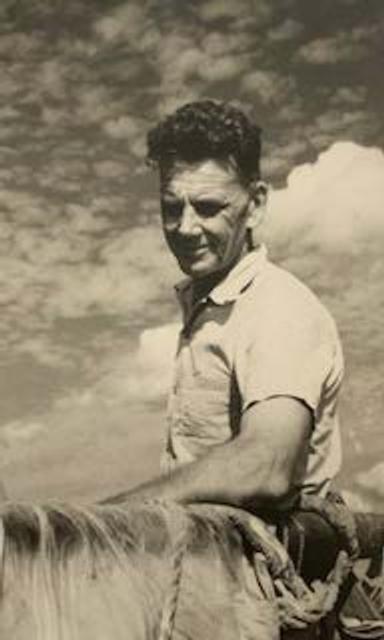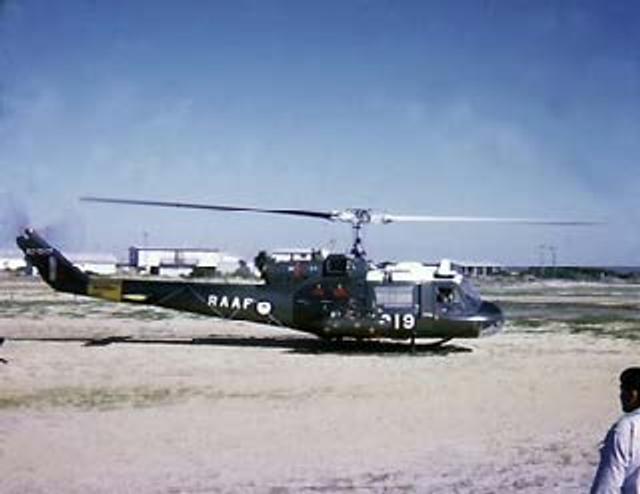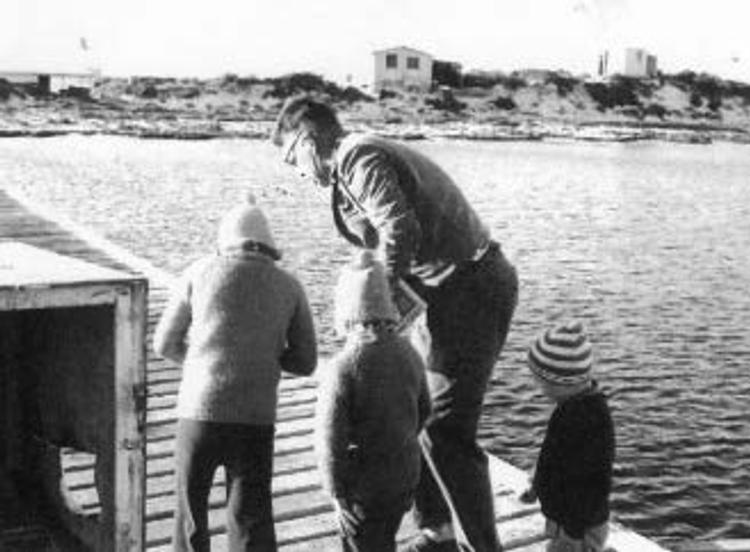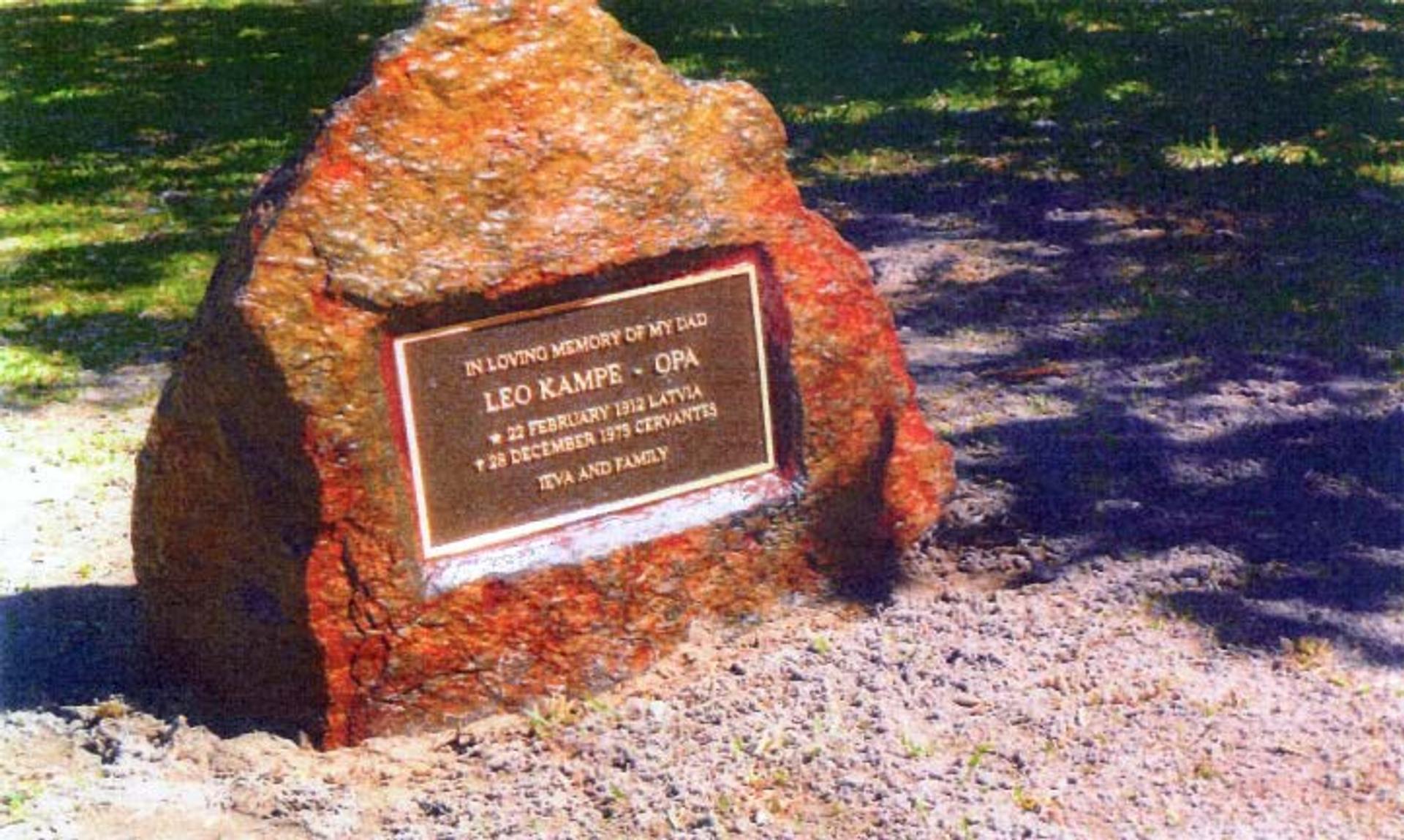Netta
Vessel Name: Netta
Leo Kampe
Drowned at sea; Body recovered
28 to 31 December 1975
Born on 22 February 1912 in Latvia, Leo Kampe graduated in the 1930s from the faculty of Theology at Riga University. After World War Two many people who had survived war torn Europe were given the choice of migration to a number of countries that were relatively unscathed by the ravages of war. Leo’s background in theological studies saw him being sponsored by the then Lutheran Church of Australia to provide spiritual care and services to the many newly arrived Latvian migrants. Accompanied by his wife Lucy and his young daughter Eva, he arrived in Australia in 1949.

Leo Kampe happy fishing at Cervantes
![Lot 330 [now number 5] Weston Street, Cervantes](https://cdn.sanity.io/images/6qai3nxh/production/62f46875d0b618f99dd02f8ae3d01f759bd57b13-345x293.jpg?w=750&q=75&fit=clip&auto=format)
Lot 330 [now number 5] Weston Street, Cervantes

The remains of the Netta on the beach

The Royal Australian Airforce Iroquois helicopter

Leo and grandchildren at Cervantes

Leo Kampe Memorial Stone
In his role as pastor he travelled conducting services to scattered groups of Latvian migrants living throughout Western Australia. As a young girl Eva accompanied him on many of his travels and ten years after arriving in Australia, on 15 September 1959, the Kampe family were naturalised and became Australian citizens. By 1975 at 63 years of age Leo had chosen a different path in life to that of travelling pastor and was crayfishing in the small coastal town of Cervantes. Crayfish as a food source had been introduced by American service personnel during World War Two and after the war finished crayfish also became popular with local people.
During the crayfishing season Leo was happy making a living catching crayfish in the peaceful environment of Cervantes. He purchased a boat and, as many other migrant fishermen had done in Cervantes, initially lived in makeshift accommodation during the crayfishing season in the dunes abutting the Indian Ocean. Once the town of Cervantes had been gazetted the makeshift homes in the dunes were no longer allowed even for the duration of the crayfishing season. Leo then built himself a brick house on the highest point in the newly gazetted town.
Tragedy struck three days after Christmas, 28 December 1975, when Leo left Cervantes at 5.30am in his boat to pull his craypots. It was a Bondwood boat, 21 foot in length and fitted with a 4 cylinder 75hp Ford diesel motor with licence number LFBF 312. Although it had no radio it was fitted with all safety equipment.
The boat was named Netta after a cocker spaniel dog Eva had bought with pocket money she had earned from working for her father making bricks for their new home. The name Netta was displayed on the side of the boat along with its licence number LFB 312.
Fisheries’ licensing rules permitted a crayboat to have 3 pots for every foot in length of the boat, allowing Leo to fish with 63 craypots. Leo had set his craypots between Cervantes and Jurien Bay extending to about 3 miles offshore. Weather conditions at the time were fine and dry with a moderate sea and southerly wind at about 20-25 knots and Leo proposed to return to Cervantes at approximately 2pm in the afternoon.
When Leo failed to return to Cervantes at the allotted time concern was expressed by other local crayfishermen and by 5.50pm 9 boats had put to sea to search for him. A Cervantes local, Donald Hunt, telephoned the Jurien Bay Police Station to make an official report about the failure of Leo to return from fishing. Leo’s daughter Eva and his son-in-law, Len Vlahov, who were having a family Christmas holiday at Cervantes, engaged a private aircraft to search for him. Further help was sought by Eva and Len from Sergeant Brennan at Jurien Bay Police Station and another charter aircraft was authorised to assist in the search.
At 6.30pm First Class Constable, Graeme Sisson, from Jurien Bay Police Station departed in a single engine Beechcraft Bonanza aircraft piloted by Roger Ruddock to search the area between Cervantes and Jurien Bay, extending to about 5 miles offshore. During the search the Emma II, a local crayfishing boat from Cervantes, skippered by Max Gazeley, located a hatch cover 2 miles south of Jurien Bay and about half a mile offshore. An immediate search by both aircraft and other fishing boats in the area failed to find any sign of Leo or the Netta. Due to failing light and poor visibility Constable Sisson returned to Jurien Bay at 7.50pm.
With the assistance of Ross Fisheries at Jurien Bay Sergeant Brennan continued to maintain radio contact with the boats assisting with the search. At 6.30pm he contacted Senior Inspector Kenward, to advise him of the day’s search. It was decided to arrange for another aircraft from the Department of Air Transport to leave Perth at first light the next morning, 29 December 1975, to assist with the search.
At 5am the following day Constable Sisson and fisheries inspectors J Williams and M Porter commenced searching the beaches in a dinghy between Jurien Bay and Cervantes. The search included the reefs and islands off Jurien Bay. Forty-five minutes later, at 5.45am the men located the missing Netta partly submerged in about 6 feet of water, 75 yards offshore, 1 ½ miles south of Jurien Bay. Fisheries inspector J Williams dived onto the boat but found no sign of Leo. There was only minor damage to the boat and all safety equipment was intact.
Constable Sisson returned to Jurien Bay Police Station and advised Sergeant Brennan that the Netta had been found. Sergeant Brennan then contacted the Department of Transport aircraft and fishing boats involved in the search. Although extensive, the search failed to locate any sign of Leo and the Netta was towed by Max Gazeley in the Emma II back to Jurien Bay.
Police, fisheries inspectors and civilians continued the search for the rest of the day. A fisheries inspector from Cervantes, L Wallis, patrolled the beach in a four wheel drive vehicle between Cervantes and Jurien Bay and fisheries inspectors J Williams and M Porter continued to patrol the beach in a dinghy between Jurien Bay and Sandy Point. The results of the search were reported by Sergeant Brennan to Eva and Len Vlahov and also to Senior Inspector Kenward.
On 31 December after two unsuccessful days of searching, Senior Inspector Kenward requested further assistance from the Royal Australian Air Force. An Iroquois helicopter was procured to search the beaches and islands between Cervantes and Greenhead. Twelve miles north of Jurien Bay, the fully clothed body of a male person was sighted on the beach but in an advanced stage of decomposition. The helicopter landed on the beach and the body was conveyed to Jurien Bay and from there on to the Moora District Hospital.
Life extinct was certified at 2.15pm by Doctor D K W Ramsay at the Moora District Hospital. Leo’s general appearance and his clothing allowed identification to be confirmed at 3.15pm by his son-in-law, Len Vlahov, at the Moora District Hospital Mortuary. Sergeant Brennan then informed superintendant Blackman at the Metropolitan District Office in Perth of the result of the search.
Two days later at 8.30am on 2 January 1976 a Post Mortem was conducted at the City Mortuary by Dr Hainsworth. In attendance was First Class Constable P Harbison. The cause of Leo’s death was deemed to be by drowning. Samples of blood and urine were forwarded to the Government Chemical Laboratories for examination. One week later, on 9 January 1976, Constable Sisson confirmed to the District Coroner in Geraldton, Mr Philp, the cause of death of Leo was by drowning.
Leo had been in poor health for some time with a weak heart but it was not known if this contributed to his death. He had led a very active life even before his move to Cervantes and he had always been able to maintain the strenuous lifestyle required by crayfishing.
The last confirmed sighting of Leo was made by Jefferey Smith, a deck hand on the crayfishing boat Rawhide, skippered by Kevin Tester of Cervantes. This was about 9.30am on the day Leo set off from Cervantes. It was about 3 miles offshore south of Jurien Bay near the location of Sandy Knoll Ledge. According to Jefferey Smith “All appeared correct at the time.”
As the damage to the boat was only slight Constable Sisson stated in the summary of his report that it appeared the Netta may have rolled over by a wave near the Sandy Knoll Ledge. However the fine and dry weather with moderate sea and southerly wind were The Royal Australian Airforce
Iroquois helicopter 4 perfect conditions for Leo to be out on the ocean pulling his pots. If his weak heart did fail him Leo died while doing what he had loved to do over many years. His family continue to enjoy holidays in Cervantes in the little brick house that Leo built so many years ago.
At the conclusion of a small family history written in 2017 for her grandchildren, Eva expressed how her father’s loss had affected her with the poignant words: Gone was my Dad, my mentor, my support, my guide, my inspiration, my babysitter and my children’s grandfather. His loss was heartbreaking and my memories of him will be with me and each one of us for all time.
Each grandchild received a copy of the history at the dedication of the memorial stone for Leo in the Cervantes Memorial Park on Sunday 26th February 2017.
